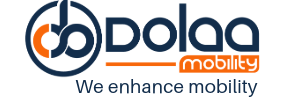Corporate Mobility & Sustainability
CORPORATE MOBILITY AND SUSTAINABILITY
Revolutionizing the commute landscape, Corporate Transport embodies the myriad approaches organizations adopt to facilitate seamless travel for employees, clients, and associates. Harnessing the power of cutting-edge technologies, companies now have the ability to elevate the commuting experience for their workforce while championing environmental responsibility.
Need for Corporate Transport
Corporate transport emerges as a crucial solution to address the prevalent gaps in public transportation networks. While public transport caters to the general populace, offering access to vital destinations like workplaces, educational institutions, services, retail outlets, and social hubs, it is not always comprehensive. This is particularly evident for employers situated in city centers or areas with concentrated attractions. The hub-and-spoke models commonly employed may fall short in reaching specific employment destinations or accommodating diverse timeframes. Consequently, employees often resort to using personal vehicles or contend with inconvenient and unsafe travel schedules. Offering corporate transport services becomes imperative for organizations to supplement existing public transport infrastructure, ensuring enhanced accessibility and addressing the limitations of conventional transportation models.

Why public transport can’t provide solutions need ?
Public transport, when inadequately designed, falls short of providing comprehensive solutions to diverse community needs. The limitations manifest in disjointed connections to popular destinations, accessibility issues, and a lack of seamless integration between different modes. Even when thoughtfully planned, public transport systems may struggle to cater to specific journeys, such as accessing employment zones during particular times or from specific origins. This inadequacy prompts organizations to take matters into their own hands by implementing dedicated shuttle buses or alternative staff transport solutions.
The challenges associated with public transport in an employment context are multi-faceted:
Asset Availability and Visibility: Peak travel times coincide with the highest utilization of available vehicles, posing a challenge for independent solutions. Establishing a dedicated service can be costly, leading organizations to explore innovative solutions like switching vehicle service types to accommodate varying demand peaks, such as off-peak-focused minibus services.
Location, Payment, and Utilization Tracking: While major employment centers may boast good transport access, this is not universal, especially in non-central locations or sprawling industrial parks. Organically grown employment hubs often lack reliable public transport access. Organizations seeking to subsidize employee travel face hurdles in implementing individual budgets across multiple modes, particularly when the public transport network lacks an advanced ticketing system. This poses a barrier to uptake, especially when seamless tracking of utilization is paramount.
Promotion and Accessibility: Even when organizations introduce commendable transport services, their visibility can be hindered if they are not easily accessible through commonly used journey planners. Ensuring that staff are aware of available options and can effortlessly access them during travel planning, whether in advance or ad hoc, becomes crucial for successful implementation.
While recognizing transportation challenges is crucial, the real progress lies in implementing effective solutions for organizations. Dolaa Mobility offers a range of solutions that seamlessly complement other initiatives like promoting active transport, flexible work-from-home conditions, and investing in supporting infrastructure.
Source: Liftango
Author
dolaaadminRelated posts
2024-2029: Five years to deliver the Green Deal’s mobility promises
Demand Responsive Transport (DRT) solutions have been a fixture in developed nat
Mistakes in Micromobility and How to Avoid Them
Overestimating the number of rides Overestimating usage rates can strain finance
Exploring Green Mobility: Alternatives to Private Vehicle Usage
As society increasingly prioritizes environmental consciousness, various sectors

